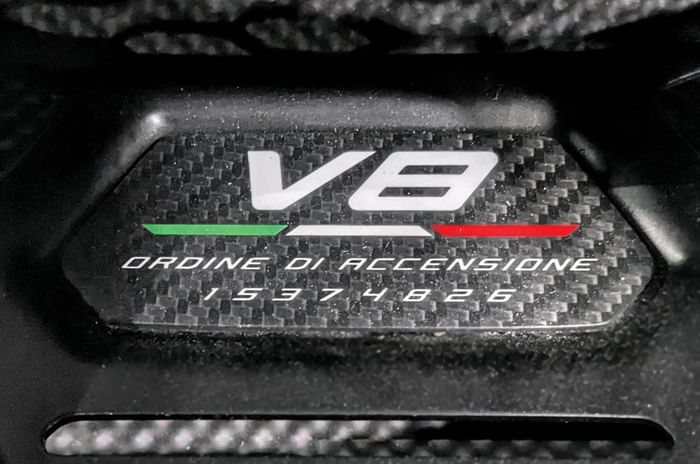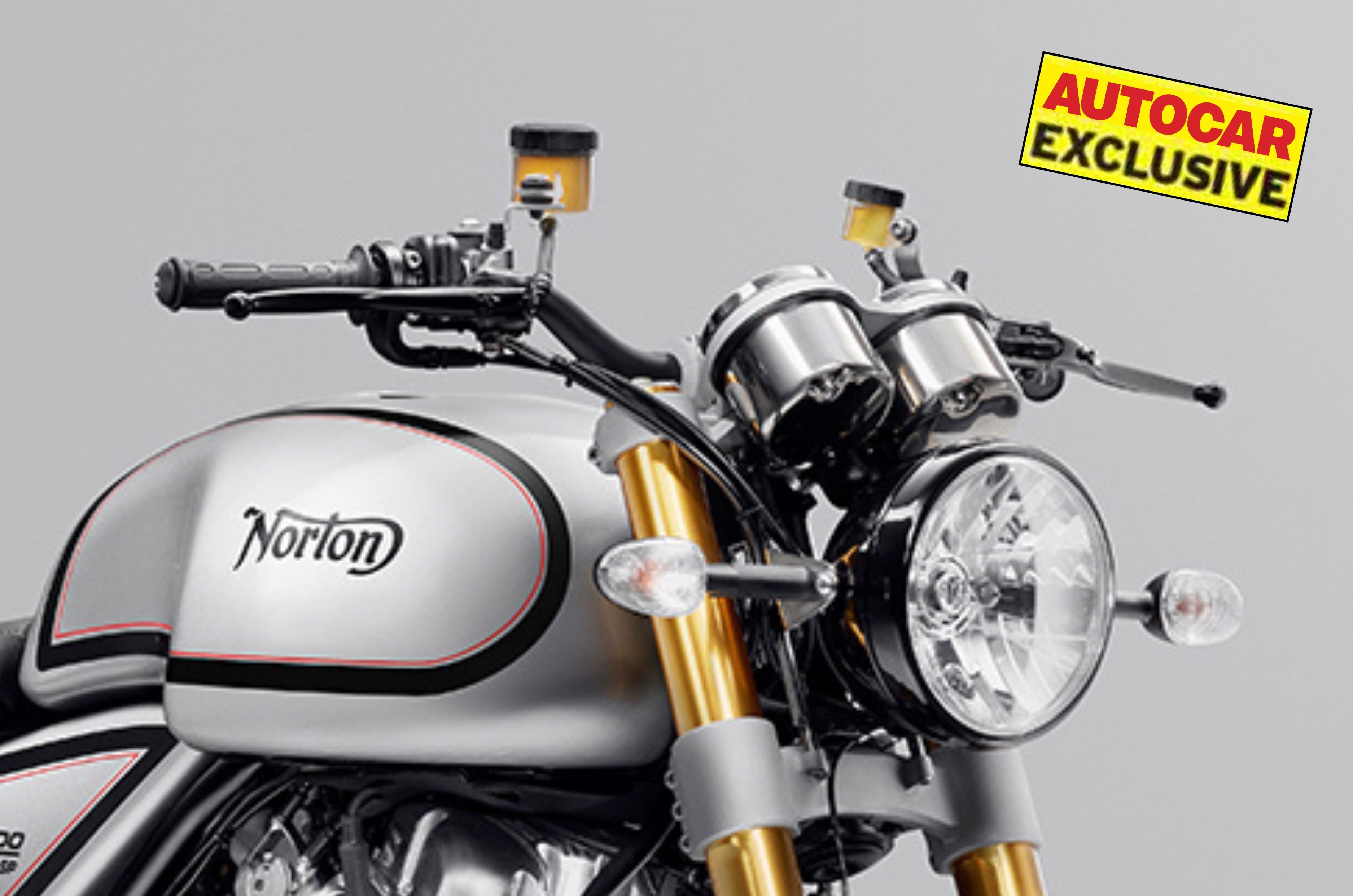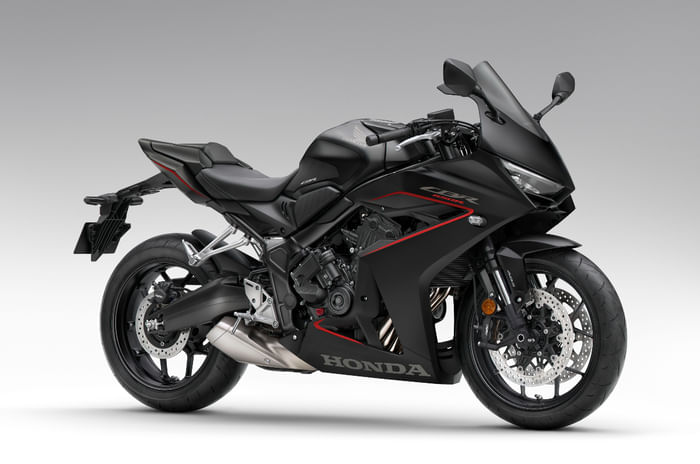[ad_1]
The Lamborghini Huracán’s successor packs a 920hp V8 plug-in hybrid powertrain. We get a close first look at its launch in Delhi.
With their distinctive, sharp, wedge-like style, there’s no mistaking a Lamborghini for anything else, and the same goes for the Italian marque’s latest creation, the Temerario. First unveiled at the Monterey Car Week in August last year, the Huracán replacement has now been launched in India at an ex-showroom price of Rs 6 crore.
Lamborghini Temerario powertrain and performance
Brand-new twin-turbo V8 revs to 10,000rpm
Unlike its predecessor, which came with an Audi/Lamborghini naturally aspirated 5.2-litre V10 engine, the Temerario is a plug-in hybrid powered by an all-new, in-house-developed 4.0-litre twin-turbo V8 and three electric motors. Total system power stands at a massive 920hp, with the turbo-petrol engine alone producing 800hp. It uses a ‘hot-vee’ configuration – turbochargers mounted between the cylinder banks – and revs all the way up to 10,000rpm. Lamborghini says this makes it the highest-revving V8 ever installed in a production car.
Front-mounted electric motors make 299hp combined
Each of the three electric motors is rated at 150hp. One is nestled between the engine and the dual-clutch transmission, without an intermediate clutch, allowing it to fill in for any turbo lag no matter how small, says Lamborghini. It also works as a starter motor and generator. The other two are mounted to the front axle and play a large part in active torque vectoring, which is far quicker to react than conventional mechanical systems, reducing brake intervention considerably for a more natural driving feel. These two motors also power the car in its fully electric mode, with a total output of 190hp. Besides other drive modes, a drift mode also makes its debut in the Temerario, with three levels of yaw control.
Flat-plane crankshaft allows for high-pitched sound
Lamborghini says it has paid a lot of attention to tuning the engine sound, with exhaust routings and engine mounts designed with aural characteristics in mind. The new V8’s flat-plane crankshaft also gives it a distinctive high-pitched wail. At the launch, the engine was fired up briefly, and first impressions were very good indeed.
Lamborghini Temerario interior and features
New all-aluminium chassis makes cabin roomier
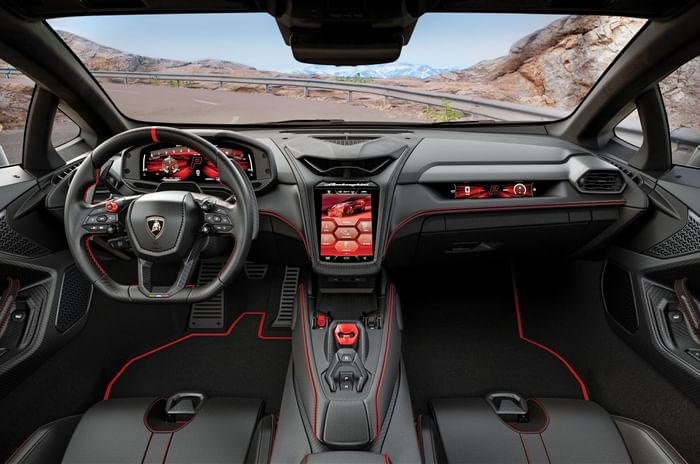
The Temerario moves away from the carbon-fibre and aluminium construction of the Huracán and, instead, has an all-aluminium spaceframe, which delivers a 20 percent increase in torsional stiffness. It has resulted in a 46mm increase in legroom and 34mm in headroom – handy when wearing a helmet on a track day. While sitting inside, there was more than a 5-finger gap between the roof and my 5-foot, 8-inch frame. The front storage is also significant for a supercar, with the 112-litre boot being able to accommodate two cabin suitcases.
Interior retains Lamborghini’s hallmark aviation aesthetic
The interior has well-defined cuts and creases that give it a futuristic aircraft vibe. The start/stop button with an aviation-style flip-up toggle finished in red adds a lot of visual drama. The drive mode rotor on the multi-function steering wheel is also finished in red. The interior is a lovely mix of carbon fibre, leather and microfibre. The dash houses a 12.3-inch digital instrument cluster and two touchscreens – an 8.4-inch portrait-oriented central unit and a slim 9.1-inch passenger screen. Two types of seats are available – 18-way-adjustable, heated and ventilated units or optional carbon-fibre sports seats.
Lamborghini Temerario exterior design
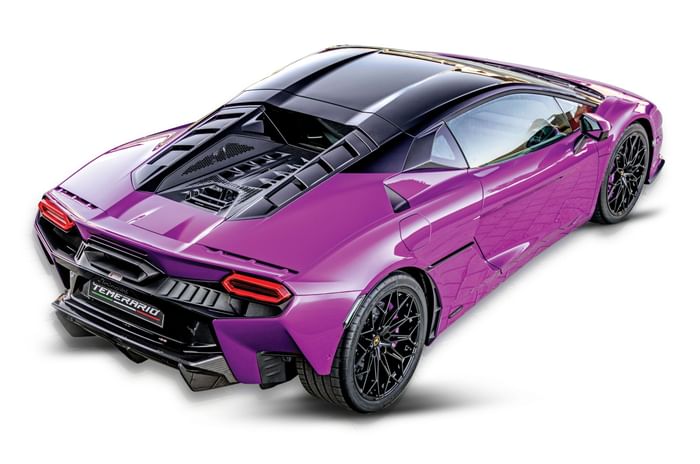
Styled at Lamborghini’s Centro Stile, the Temerario presents the classic wedge-like Lamborghini silhouette. What’s very apparent with this car, though, is the massive amounts of open frontal area. Besides the air intakes in the bumper, the hexagonal daytime running lamps also have air tunnels inside them, and the slim headlight units are sunken in and contain aero channels, too.
Bumper cutaways inspired by motorcycle design
The roof has a central channel that directs air towards the rear spoiler, and the two humps at the side give that extra headroom to occupants. At the rear, you can peek at the V8 through small openings, but the hatch can only be opened at the workshop; a panel on the right-hand side flips open for fluid top-ups. There’s a large central diffuser lower down, but what’s striking are the massive bumper cutaways that expose a large portion of the rear tyres, which look like they will deliver a massive rooster tail of a spray.
Temerario makes more than double the downforce of the Huracan Evo
Lamborghini says that with all the aero work, there’s a 103 percent increase in downforce compared to the Huracán Evo, and with the lightweight Alleggerita package, the rise is 158 percent. The package reduces body weight by over 25kg by using lightweight interior components and carbon rims.
With bookings now open, Temerario customers can begin to specify their orders, though deliveries are only scheduled to begin early next year.
QnA: Francesco Scardaoni, Asia-Pacific Region Director, Automobili Lamborghini SpA
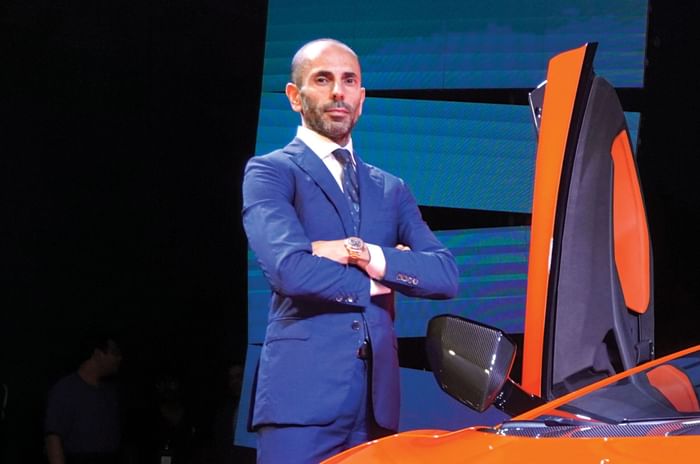
On Lamborghini’s hybridisation:
What was the ideology behind the Temerario’s hybridisation, and are there any pros and cons to it?
There are no cons to hybridisation. For us, hybridisation means adding additional features and capabilities to the car. So, more power, more driveability and agility, and less emissions. With the e-motors, that electrification allows us to play with the torque far more than with normal vectoring systems, so it’s faster in corners. This is why we refer to it as an HPEV, which is a ‘high-performance electrified vehicle’.
On customers’ response to hybrids:
How has the feedback to hybridisation been from Lamborghini customers globally?
When we started with the Revuelto, the feedback was amazing. The car is sold out for more than two years, so I would say that enthusiasts are really happy with the setup from that naturally aspirated V12. The Urus SE – with the hybridisation there, too – customers love it, and in all these cars, we have a stealth mode that allows for quiet and fully electric running, which is useful for cities and getting out of neighbourhoods.
On Lamborghini’s EV plans:
What does Lamborghini’s future strategy for electric cars look like?
Since we designed the electrification strategy for Lamborghini, the ‘Direzione Cor Tauri’, the idea was never to be the first one but to be the best one when getting into EVs. So, to be the best one, it was important to set the right time for introduction, and we think that is still some time away for full EVs. So, our first car to be purely electric will arrive at the end of the decade. It will be a GT and 2+2, and we believe that our customers are asking today for hybrids, and this is a key step to get to [full] electrification.
On Lamborghini’s 2025 forecast:
What’s your forecast for Lamborghini’s performance in India in 2025?
We had a good year last year with 113 units sold [in India], and we see a positive trend for 2025 with the orders that we already have in hand. India is a promising and strategic market for us, so we will have all of our model lines available and even offer activities like the Lamborghini Esperienza Giro, as well as cross-brand collaborations with brands like Balenciaga and Tod’s.
Also see:
Lamborghini Revuelto review: Effortless 1015hp hybrid supercar
“Not to be the first, but the best,” is Lamborghini’s EV plan
[ad_2]



